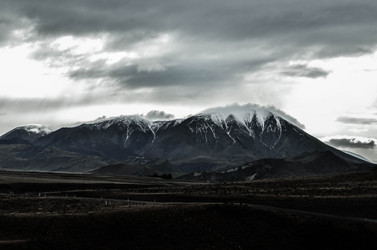High Altitude: Get Acclimated or Fail to Prepare
Posted by Nicholas Zuber on May 3rd 2017
It’s that time again, when the quiet mountain passes of Colorado become congested with fifth wheel campers and other nefarious forms of outdoor recreational vehicles, generally hailing from a state inhabited by a lone star and many of my exes. Being out in the sun and wilderness is one of the most excellent ways you can spend your free time, but the rewards do not come without risk.
One often-ignored risk that we should talk about is high altitude, which for our outdoorsy purposes is anything from 5,000-11,000 feet above sea level. Altitude sickness can range from simply not feeling well to becoming very ill and requiring evacuation. Acute Mountain Sickness (AMS), and even High Altitude Pulmonary Edema (HAPE) and High Altitude Pulmonary Cerebral Edema (HACE), are not unheard of amongst tourists.
Most altitude issues occur at levels of 10,000 feet or higher (Shlim & Hacket, 2015). However, this depends on the individual’s medical conditions and fitness status. I commonly run into folks with Atrial Fibrillation (AFib) who have issues when they’ve quickly traveled to 8000-9500 feet, and have not taken the time to acclimate and hydrate. This is avoidable by spending a few days at a lower elevation and hydrating properly- with water, not Mountain Dew, not Gatorade, and definitely no alcohol. It's important to remember that consuming caffeine will hinder hydration. A ratio of 1:3 is the standard- it takes 3 times the amount of water to catch up to one caffeinated beverage.
The most common altitude issue is that of Acute Mountain Sickness (AMS), suffered by nearly 25 percent of all visitors to Colorado (Shlim & Hacket, 2015). Symptoms include fatigue, nausea, headache, loss of appetite and trouble sleeping, come on within a few hours of reaching altitude, and last for up to 48 hours. Again, proper hydration is key.
High altitude pulmonary edema and cerebral edema are two separate conditions that can happen independently, together, or even in conjunction with AMS. HAPE is fairly rare, occurring in approximately 1 in 10,000 skiers, and 1 in 100 persons mountaineering at 14,000 feet or so(Shlim & Hacket, 2015). It is more fatal than HACE, and symptoms include rapid onset of difficulty breathing.
Beyond acclimatization and hydration, which are still the two key ways to combat altitude issues, Diamox is a drug that can be taken days in advance to help you acclimate more quickly to elevation and help prevent AMS, but it won’t stop HACE or HAPE. There are few other home remedies out there, from taking ginkgo to some ibuprofen, to eating a lot of antacids. Studies on those vary, so use at your own risk.
Don’t ruin your vacation- take a few extra days getting used to the high country. You can choose to acclimate or fail to prepare. Worst case scenario, you’ll come down with HAPE… high altitude flatus expulsion (Auerbach & Miller, 1981). And that is exactly what you think it is…
Keep your whistle wet, and your powder dry.

